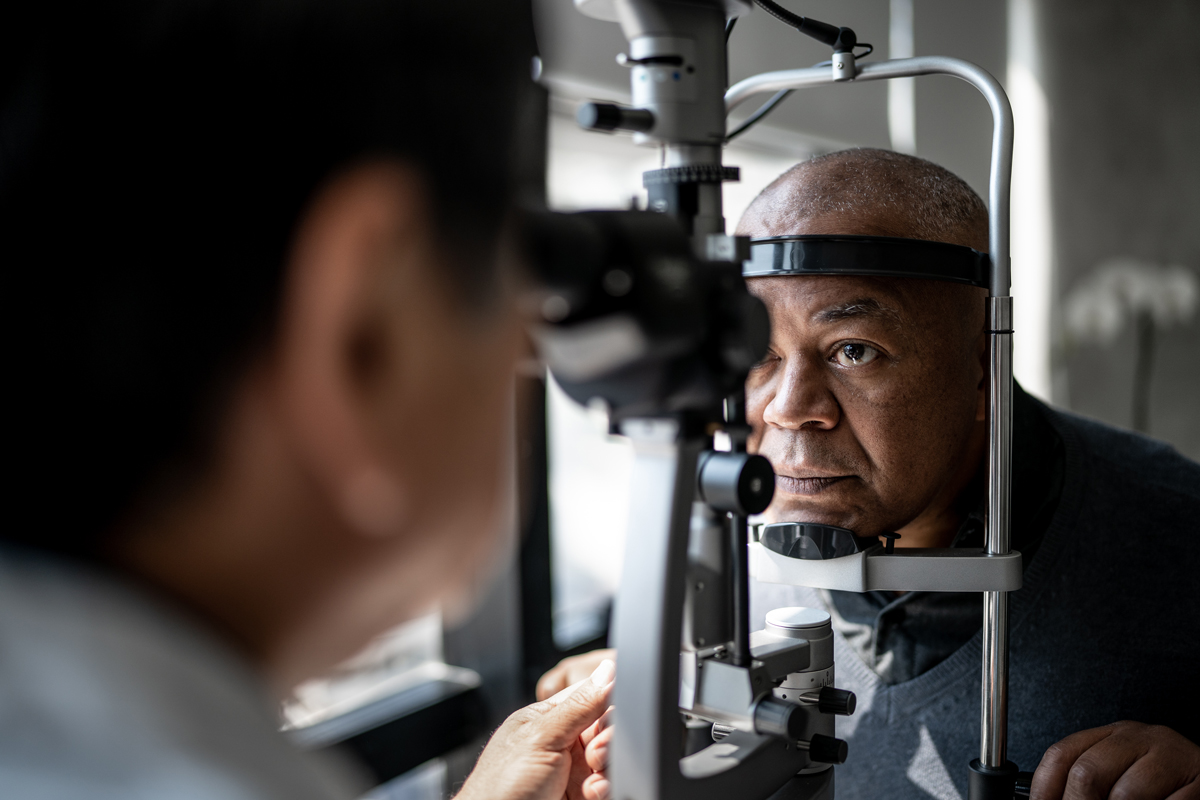 |
|
Additional educational efforts are needed for underserved populations. Photo: Getty Images. |
Addressing disparities in eye care requires better dissemination of health information and optimization of health literacy among citizens. The American Academy of Ophthalmology recently released an article that evaluated the status of health literacy in visual health and suggested ways to improve health literacy as a means of reducing several disparities they highlighted. These initiatives require interventions focused on both patients and physicians and other healthcare professionals.
Disparities in Care
The article noted that an online patient survey conducted by the American Academy of Ophthalmology found that only 19% of respondents were able to identify the three main causes of blindness in the United States: glaucoma, macular degeneration and diabetic eye disease. Also, 47% were aware that vision loss and blindness do not affect all people equally, and only 37% knew that many causes of vision loss can be asymptomatic in the early stages.1
Data demonstrated that, among adults with diagnosed diabetes, the most commonly reported reasons for not receiving eye care in the preceding year were “no need” and “cost or lack of insurance.” Those who reported “no need” as a barrier were most likely to be 65 or older. One study on racial and ethnic disparities in diabetic retinopathy screening found that minority youths and those with public insurance were less likely than Caucasian youths to follow screening guidelines and that one of the main barriers reported by participants was not receiving a recommendation from a healthcare professional to obtain an eye examination.
Despite current initiatives that provide education and clinical site initiatives to eliminate healthcare disparities and training in all relevant cultural competencies, one survey of 954 US medical residents across 29 states showed that knowledge about health disparities did not continue to improve through the duration of their residency training.
Regarding access to educational materials, the article noted that all adults, regardless of their health literacy skills, were more likely to get health information from nonprint sources than from print media. Studies suggested that picture-based instructions and video interventions helped patients understand how to use their medications and decreased errors.
The authors found electronic health systems tend to be designed for users who are similar to its designers, potentially overlooking the needs of disadvantaged patients or patients with low health literacy. “To be most effective and equitable, electronic health systems need to match the eHealth literacy needs of their users,” they wrote in their paper.
Unfortunately, one assessment of online patient educational materials, including those from major ophthalmologic associations, found that most are written above the American Medical Association and National Institutes of Health recommended fourth- to sixth-grade reading level. Regarding social media, one study found that upward of 80% of practicing medical professionals agreed that social media could be an effective educational tool, although only 43% of those with accounts reported using social media to educate patients.1
Education in Action
On the basis of its review of the available literature, the authors of the article provided a series of recommendations that may serve as guidelines for patient and physician education. They are summarized in another article in Ophthalmology:2
Patient education. Here are suggestions for educating patients:
- Keep readability of patient education materials at a fourth- to sixth-grade reading level. Provide in-office education using visual aids, picture-based instructions and videos.
- Tailor messages toward the intended population. Target individuals at higher risk of ocular disorders and health inequities, including the elderly population, those with diabetes, Blacks, Hispanics, Native Americans, people living in poverty and residents of medically underserved and rural areas.
- Inform patients about reliable sources of educational materials including online resources and social media.
Physician education. Here are those for educating physicians:
- Educate primary care professionals on the importance of vision screening. Encourage evidence-based and approved consensus-based guidelines for eye exams.
- Develop awareness of eye healthcare disparities among various socioeconomic and cultural backgrounds. Support implicit bias and cultural humility training.
- Promote education in ophthalmology at medical schools and in residency training for family medicine, internal medicine and pediatric programs.
- Increase research to measure health literacy, identify eye health knowledge gaps and develop, implement and evaluate interventions to improve health literacy and vision outcomes.
“Advancing dissemination of health information and enhancing health literacy may help not only to reduce healthcare barriers in underserved populations but also to lessen visual health disparities,” the authors wrote.1
1. Capó H, Edmond JC, Alabiad CR, et al. The importance of health literacy in addressing eye health and eye care disparities. Ophthalmology. September 1, 2022. [Epub ahead of print]. 2. Capó H, Briceño CA. Impact of health literacy on eye health disparities. Ophthalmology. September 1, 2022. [Epub ahead of print]. |

